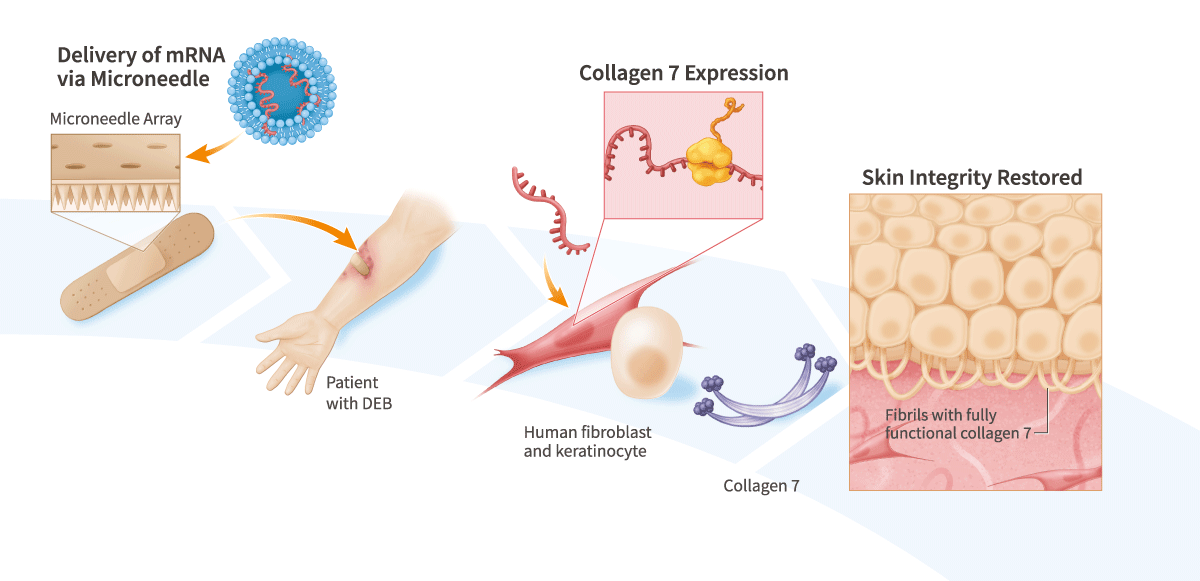mRNA Therapies for Dystrophic Epidermolysis Bullosa (DEB)

Dystrophic Epidermolysis Bullosa (DEB) is a disease caused by mutations in the COL7A1 gene, which encodes collagen 7. Many DEB patients have extremely delicate skin, and in the most severe cases, live with painful blisters and open wounds over large areas of their bodies. Our scientists developed a method for treating dystrophic epidermolysis bullosa […]